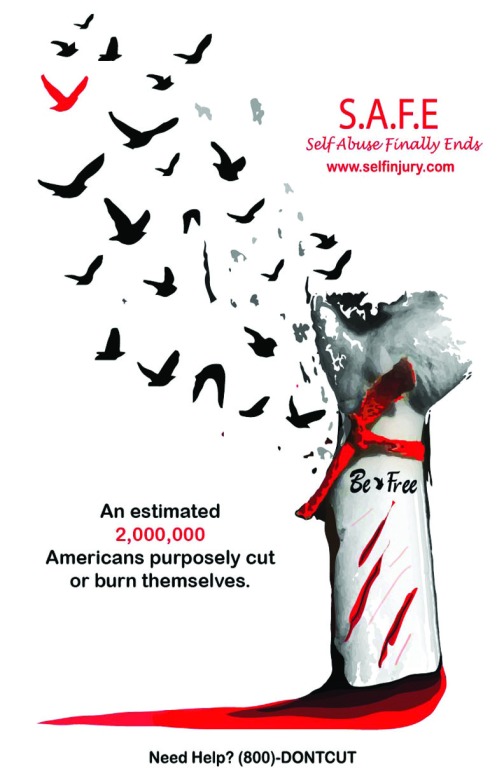
This month long observation is recognized in the United States, Canada, and Western Europe. In the U.S. alone there are 2 million cases of self-injury reported annually, mostly among youth. It’s time to end the stigma of self-harm.
Self injury is any deliberate, non-suicidal behavior that inflicts injury on one’s body. Although self injury is not a suicidal behavior if the emotional trauma that causes one to self-harm continues it can lead to suicidal thoughts or actions. People often self harm as a way to confront emotional pain. When most people think of self-harm they often think of cutting, but there are many other forms. Actions such as burning, scratching, consuming harmful products such as bleach, pulling out clumps of hair, bruising, and breaking bones are all forms of self-injury. Self-injury is a coping mechanism and is seen as another way to deal with the emotional pain that many experience, but have difficulty handling or processing. Self-injury occurs across all ages, genders, races, and beliefs. If you know someone who self injures reach out to them and follow the tips below to do so successfully.
DON’T
- Get angry or show disgust. Negativity alienates and ultimatums only drive the person away from you.
- Deny the problem. It’s not the person’s problem or just one of his/her ‘things’. It’s not a fad, social statement or a phase he/she will grow out of.
- Hide sharp objects. If the person wants to self-injure, he/she will find a way.
- Judge the severity of the injury as an indicator of the level of emotional pain. A severely depressed person might only have scratches instead of cuts.
- Assume the person is okay once in treatment. Recovery from self-injury can take months, maybe even years.
DO
- Stay calm. Freaking out won’t solve anything. It will just close all lines of communication.
- Talk. Be non-judgmentally supportive. Ask “Why are you doing this to yourself?”
- Take the problem seriously. It’s not about attention-seeking or a growing pain.
- Seek treatment. Accompany the person to the doctor or counselor but don’t be pushy about privacy.
- Find the triggers. Focus on the underlying problems rather than just the injury.
- Trust the person. Self-injury is just a small part of the person.
It’s time to end the stigma of self-injury and help those who self-injure. Visit the links below for more resources on helping individuals and how to end the stigma.
Sources: http://www.huffingtonpost.ca/terezia-farkas/self-injury-awareness-month_b_6810634.html http://selfinjury.com/
